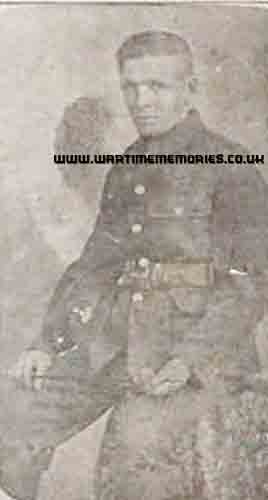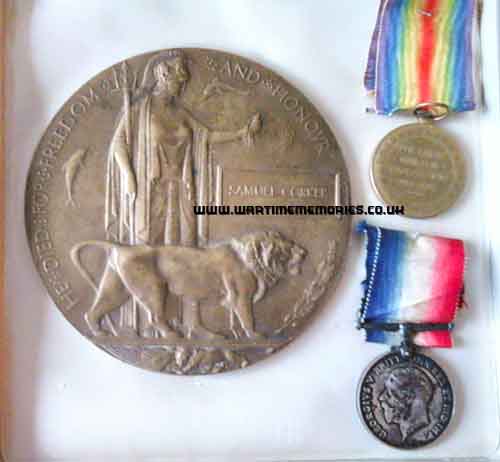Additions will be checked before being published on the website and where possible will be forwarded to the person who submitted the original entries. Your contact details will not be forwarded, but they can send a reply via this messaging system.
please scroll down to send a message
Pte. Samuel Corker
British Army 1st/6th Battalion 50th (Northumbrian) Division Durham Light Infantry
from:Burhope Co Durham
(d.14th April 1917)
Samuel was one of 6 brothers and one sister (my mother Elizabeth, who was the baby of the family). All of the boys and father worked in the coal mines in County Durham, especially the Burnhope Colliery where they lived.
In the 1911 census when Samuel was 15 his occupation was a pony driver. This was a boy employed in driving the horses underground. They were usually 14 or 15 years of age. His brother Adam, who was 20, was a pony putter. This was someone who pushed mine waggons from the working place to a horse road or mechanical haulage road.
The putters used to be divided into trams, headsmen, foals, and half-marrows. These were all boys or youths. Their employment consisted in pushing or dragging the coal from the workings to the passages in which horses could be employed, “the putter putts or thrusts behind”.
On the Burnhope Colliery Roll of Honour after WW1 Samuel’s occupation was down as a putter so he had moved to the same job as his brother by the time he enlisted.
Samuel was killed in Action at The First Battle of Arras, France, April 14th 1917 (aged 21). Arras Memorial, Faubourg D’Amiens British Cemetery, Bay 8.
In March 1916 the British Army moved into this sector of the Western Front, which included Arras, and British burials were laid to rest here from that time.
The cemetery was used by the British and Dominion Forces until the end of the war in November 1918. After the Armistice more graves were brought into the cemetery from outlying battlefield burials and two cemeteries nearby.

